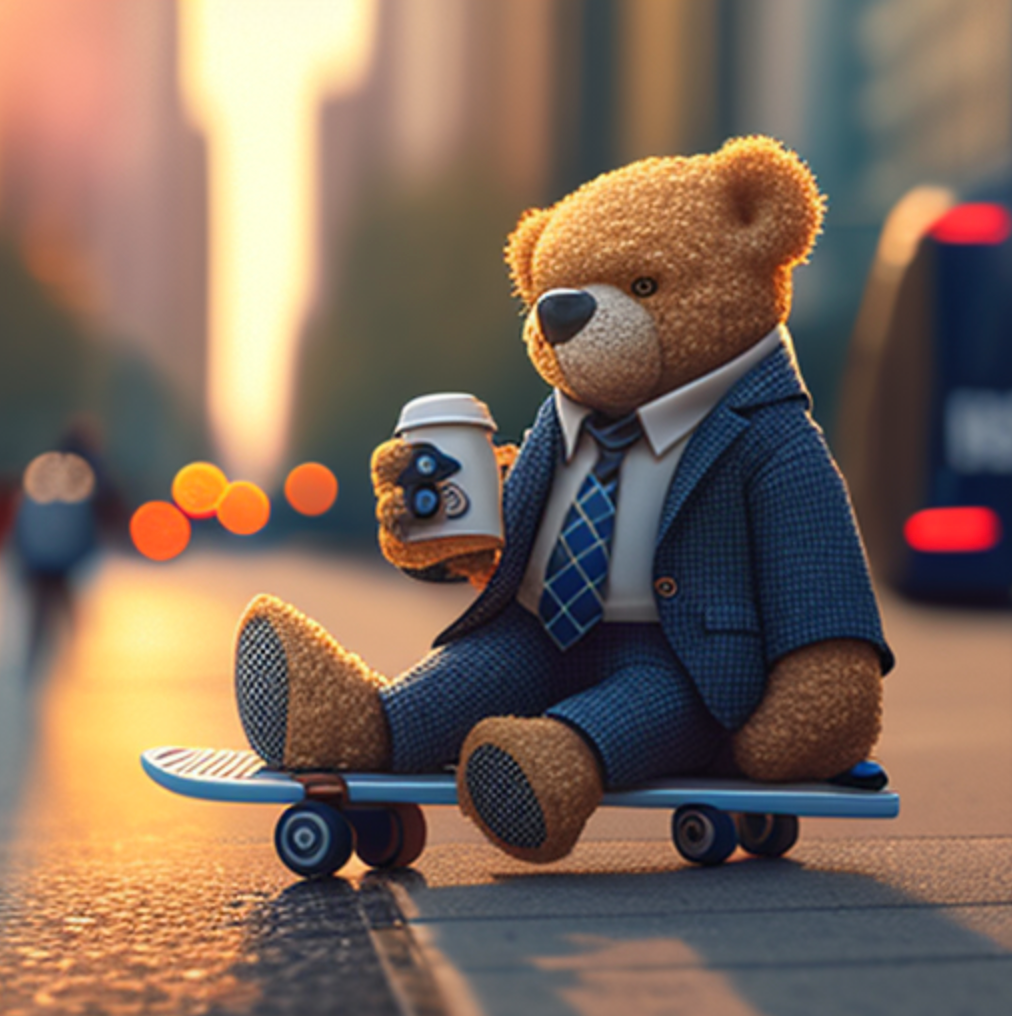
Using AI to Generate Images for Marketing and Product Merchandising
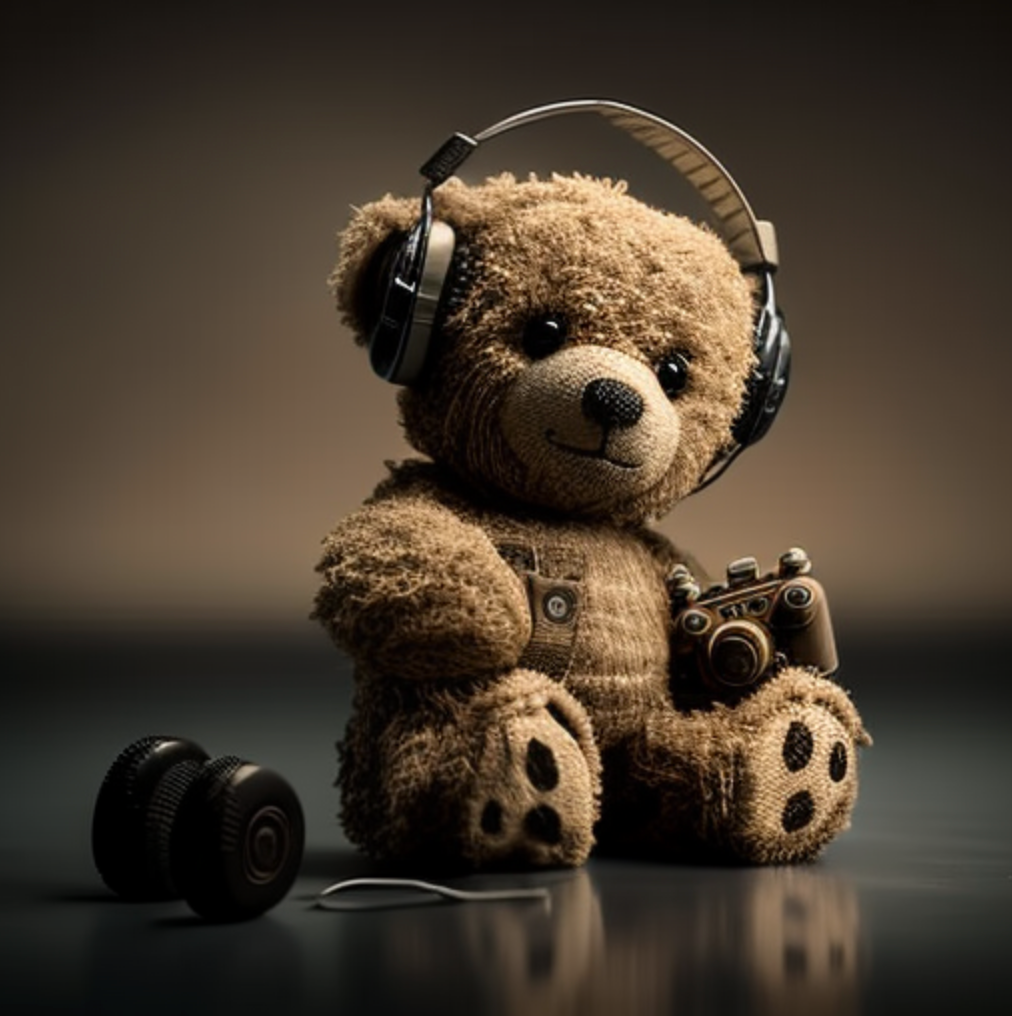
The use of Artificial Intelligence is becoming increasingly sophisticated when it comes to creating art, images, and visuals. Generative models are one such approach taken by AI to make art that appears unique.
The models are trained on large datasets which then allow them to generate new, never before seen art pieces. Such models can be subjected to fine-tuning in order to create more original pieces, perhaps in particular styles like portraits or landscapes and can vary elements such as colors and tones. In this way, AI is taking a prominent role in the realm of artwork creation with incredibly diverse and interesting results.
In this article, I will discuss the key benefits of using artificial intelligence (AI) in the production and editing of images. Specifically, I will outline how AI can be used to customize and tailor images to fit the needs of the advertiser, create realistic product mockups, and streamline the production process to save time and resources.
Marketing Material / Advertising
AI-generated images can be used to create highly realistic and eye-catching advertisements. They can be used to generate product images, promotional graphics, and more. These images are generated using artificial intelligence algorithms that are trained on large datasets of real images.
One of the main benefits of using AI-generated images in advertising is that they can be easily customized and tailored to fit the needs of the advertiser. For example, an advertiser could use AI to generate images of a product being used in different settings, such as in a home, at the beach, or in a city. This allows the advertiser to show the product in a variety of contexts, which can help to engage and persuade potential customers.
Here are some examples of using different AI platforms:
What we need to get is: “teddy bear on a skateboard in time square, micro details 8k“
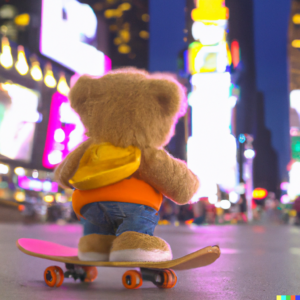
DALL-E (AI generated)
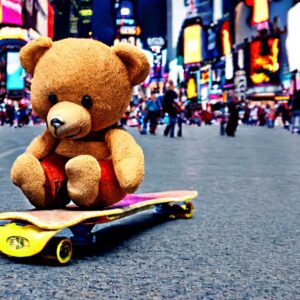
HuggingFace (AI generated)
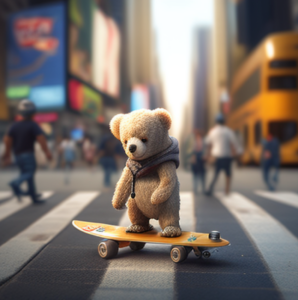
Midjourney (AI generated)
Let’s try dressing the teddy bear in different styles and see how it looks:
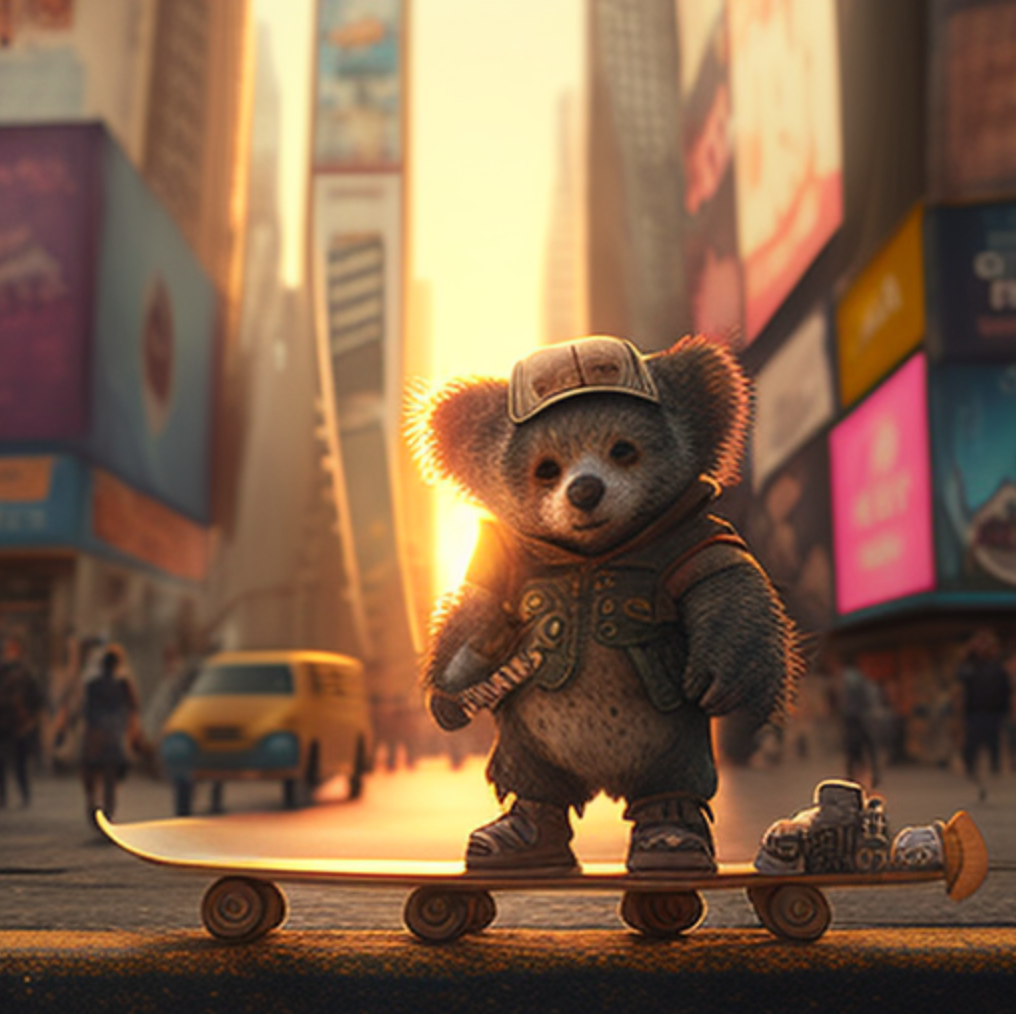
Post Apocalyptic Outfit
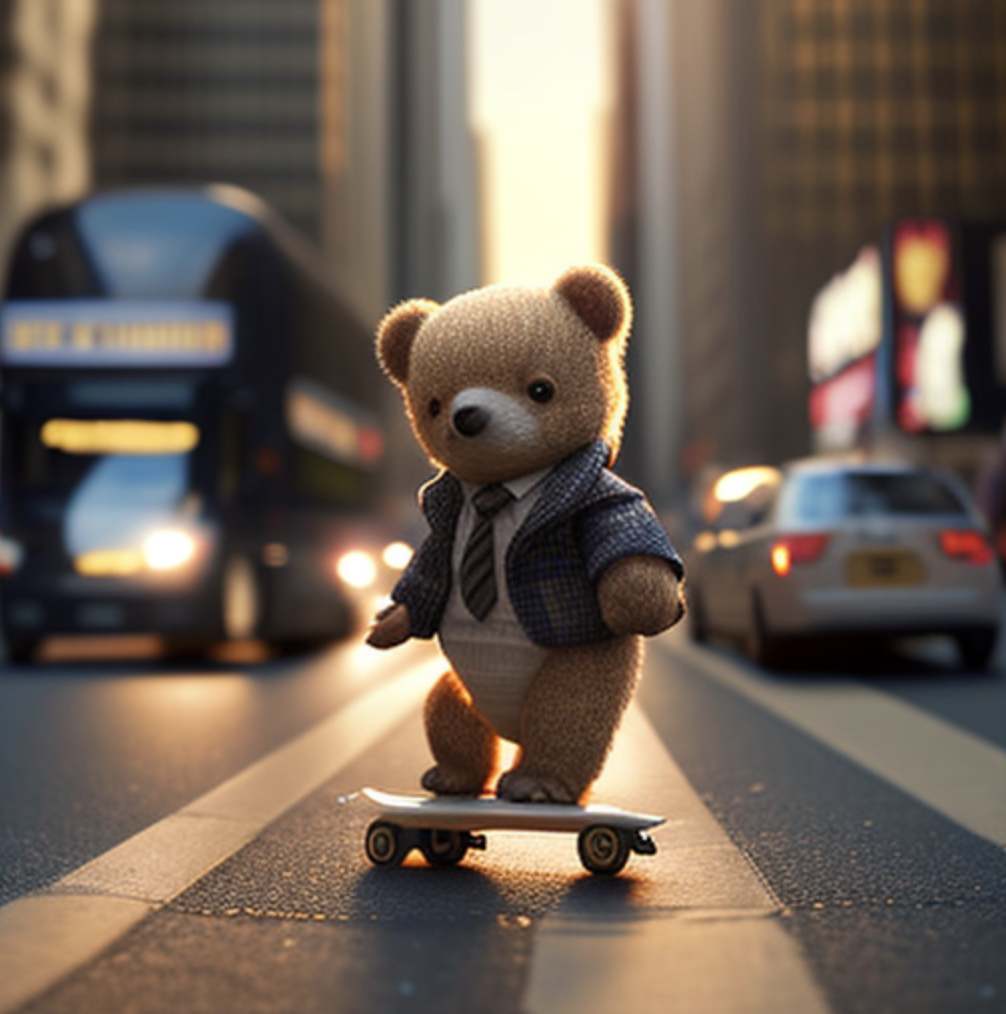
Elegant Office Suit
Now, let’s add a little complexity to Teddy by having him perform an activity, such as drinking coffee or reading a newspaper, while wearing a suit at sunrise

Drinking Coffee at Sunrise, Wearing a Suit
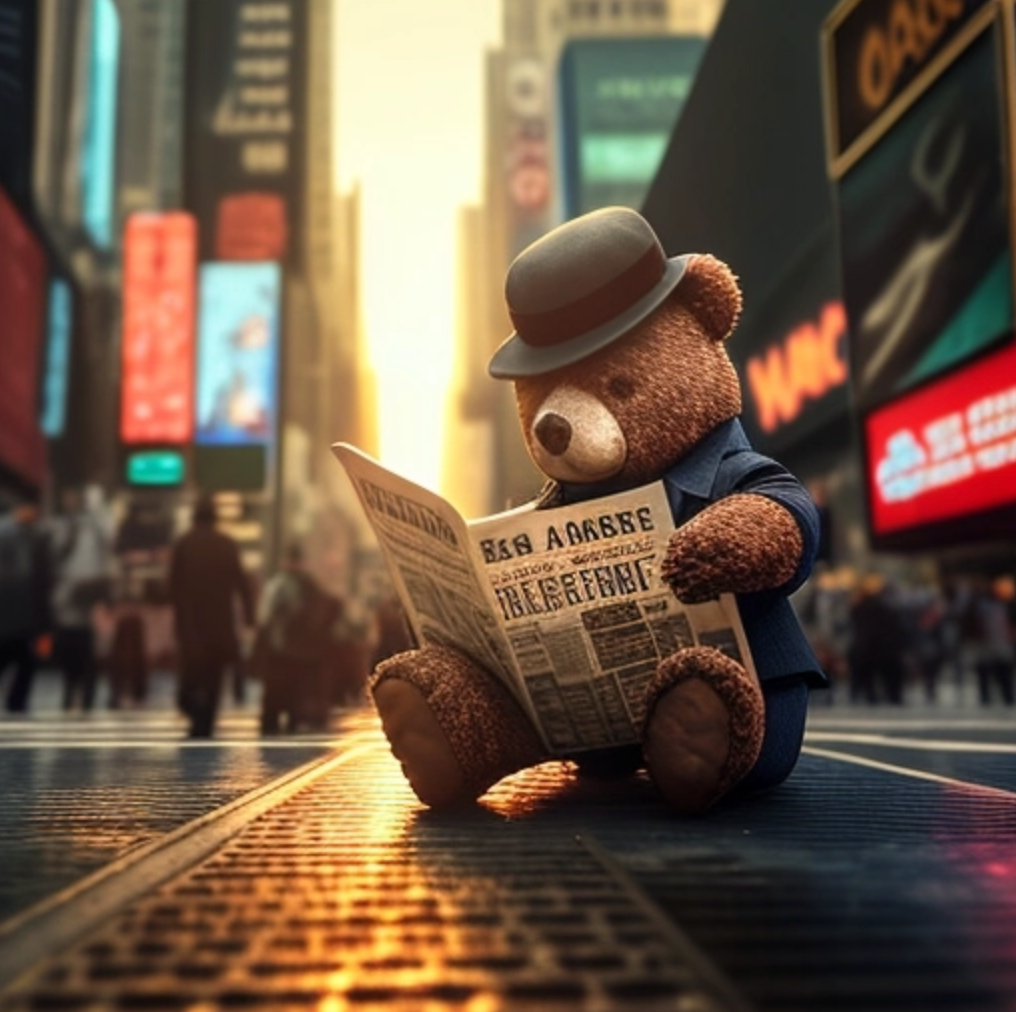
Reading a Newspaper at Sunrise, Waring a Suit
In the next exercise, we will be creating an Instagram post by adding text to a single image. This is a quick and easy way to create visually appealing content for the popular social media platform. By using a tool like Canva, which is user-friendly and simple to use, we can easily transform a plain image into a visually striking post that will catch the attention of our followers. Whether you’re looking to promote a business, share a personal message, or just want to add a creative touch to your social media presence, this exercise will help you get started.
Note: This exercise is simply a chance for you to experiment with AI tools and get a feel for how they work. It is not meant to be a comprehensive guide for design or marketing professionals. Whether you have a background in these areas or not, you can still have fun and learn something new by playing around with the tools and seeing what you can create.
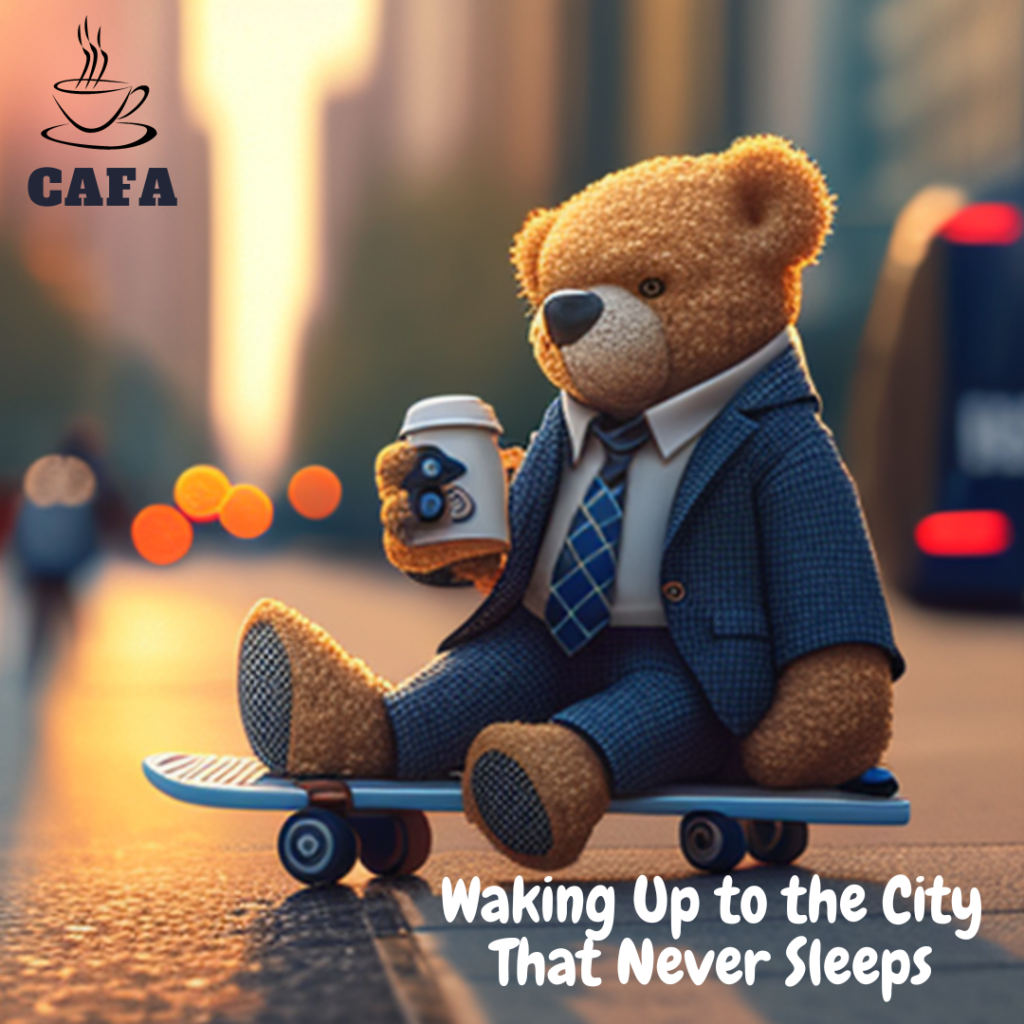
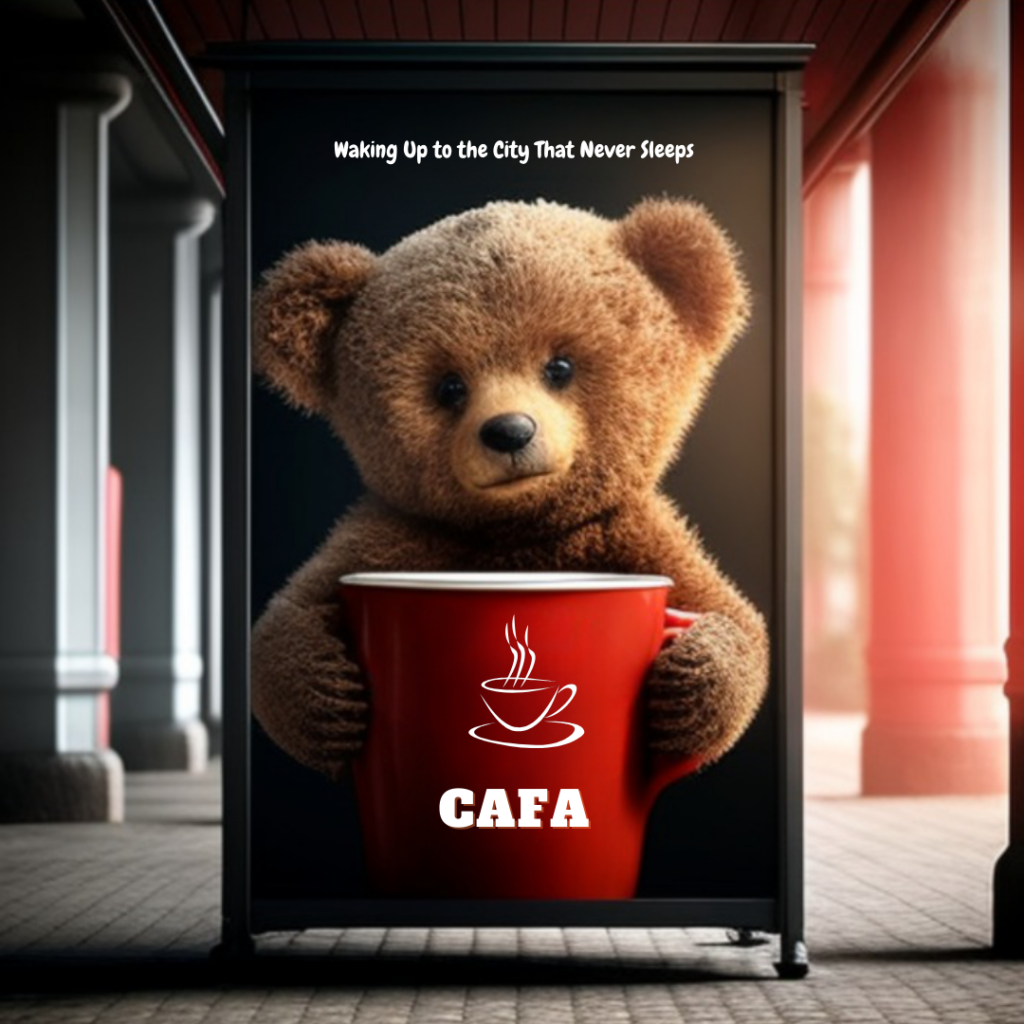
In conclusion, AI has the potential to revolutionize the way marketing images are created. Its ability to generate a virtually limitless number of unique images gives marketers a powerful tool for capturing the attention of their target audience and standing out in a crowded marketplace. As AI technology continues to advance, it is likely that we will see an increasing number of businesses taking advantage of these capabilities to create compelling and effective marketing campaigns.
Product Merchandising
AI has the ability to generate high-quality product images with just a few pieces of information. Traditionally, businesses had to rely on professional photographers to take pictures of their products for use in marketing materials, websites, and social media. This process was time-consuming and costly, and it required a significant amount of coordination to ensure that the images accurately represented the products.
With AI, businesses can now create professional-quality product images in a fraction of the time and at a fraction of the cost.
BUT
While AI tools are an impressive tool for creating unique and creative images, it is not specifically designed to produce perfect product photos. To create professional-quality product photos, it is necessary to use high-quality cameras and lighting, carefully frame the product, and edit the images to adjust colors and other settings. While AI tools can be a useful tool in the process of creating product photos, it is not a replacement for these traditional techniques.
Lets generate few product images, again with different AI tools. You can see that the quality of images are not perfect.
What we need to get is: “pineapple product image”
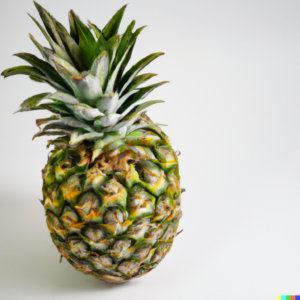
DALL-E (AI generated)
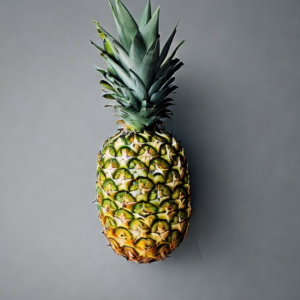
HuggingFace (AI generated)
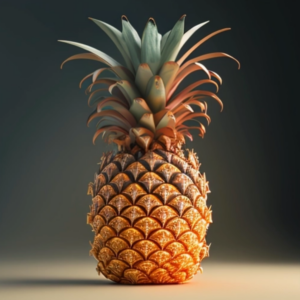
Midjourney (AI generated)
If we attempt to generate images for simpler products such as an apple or apple juice, the results tend to be more successful.
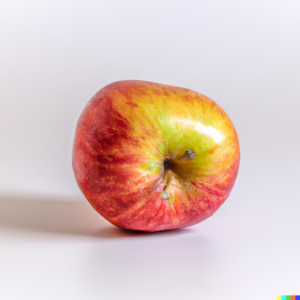
DALL-E (AI generated)
Simple Apple
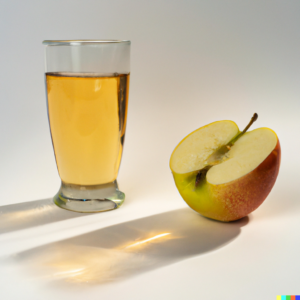
DALL-E (AI generated)
Apple near a Apple Juice Glass
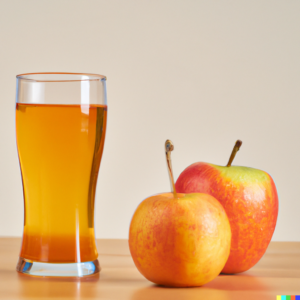
DALL-E (AI generated)
Apple near a Apple Juice Glass on a Wood Table
In conclusion, AI has the ability to generate high-quality product images with just a few pieces of information. This can save businesses time and money, and it allows them to easily create a range of professional-looking images for use in their marketing efforts, but it is not yet replacing the clasic methods.
